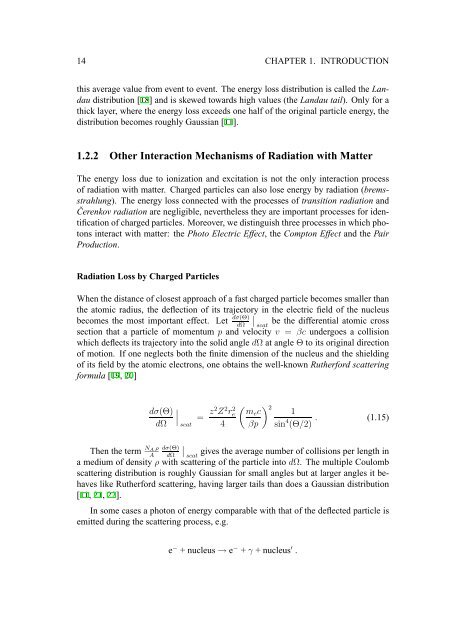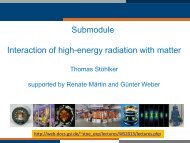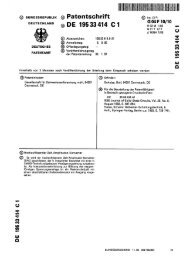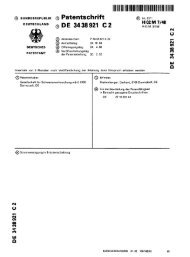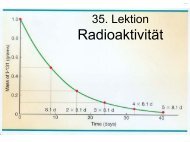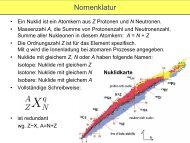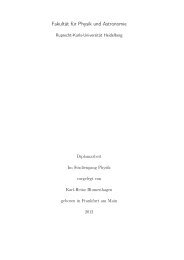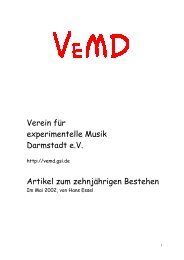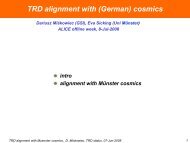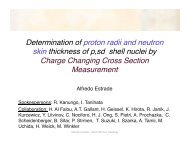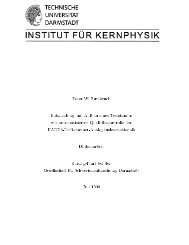doctoral thesis
doctoral thesis
doctoral thesis
Create successful ePaper yourself
Turn your PDF publications into a flip-book with our unique Google optimized e-Paper software.
14 CHAPTER 1. INTRODUCTION<br />
this average value from event to event. The energy loss distribution is called the Landau<br />
distribution [18] and is skewed towards high values (the Landau tail). Only for a<br />
thick layer, where the energy loss exceeds one half of the original particle energy, the<br />
distribution becomes roughly Gaussian [11].<br />
1.2.2 Other Interaction Mechanisms of Radiation with Matter<br />
The energy loss due to ionization and excitation is not the only interaction process<br />
of radiation with matter. Charged particles can also lose energy by radiation (bremsstrahlung).<br />
The energy loss connected with the processes of transition radiation and<br />
˘Cerenkov radiation are negligible, nevertheless they are important processes for identification<br />
of charged particles. Moreover, we distinguish three processes in which photons<br />
interact with matter: the Photo Electric Effect, the Compton Effect and the Pair<br />
Production.<br />
Radiation Loss by Charged Particles<br />
When the distance of closest approach of a fast charged particle becomes smaller than<br />
the atomic radius, the deflection of its trajectory in the electric field of the nucleus<br />
becomes the most important effect. Let dσ(Θ) ⏐ be the differential atomic cross<br />
dΩ scat<br />
section that a particle of momentum p and velocity v = βc undergoes a collision<br />
which deflects its trajectory into the solid angle dΩ at angle Θ to its original direction<br />
of motion. If one neglects both the finite dimension of the nucleus and the shielding<br />
of its field by the atomic electrons, one obtains the well-known Rutherford scattering<br />
formula [19, 20]<br />
dσ(Θ)<br />
dΩ<br />
⏐<br />
⏐ scat<br />
= z2 Z 2 r 2 e<br />
4<br />
2 mec 1<br />
βp sin4 . (1.15)<br />
(Θ/2)<br />
Then the term NA<br />
⏐<br />
ρ dσ(Θ) ⏐ gives the average number of collisions per length in<br />
A dΩ scat<br />
a medium of density ρ with scattering of the particle into dΩ. The multiple Coulomb<br />
scattering distribution is roughly Gaussian for small angles but at larger angles it behaves<br />
like Rutherford scattering, having larger tails than does a Gaussian distribution<br />
[11, 21, 22].<br />
In some cases a photon of energy comparable with that of the deflected particle is<br />
emitted during the scattering process, e.g.<br />
e − + nucleus → e − + γ + nucleus ′ .


